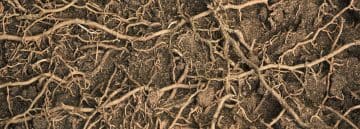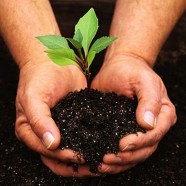
Question on respiration and the impact of waterlogging on roots – R2101 – February 2015
Q.4.
a) Name the site of aerobic respiration in the cell. (1 mark)
b) State the basic equation for aerobic respiration. (3 marks)
c) Describe the effects of waterlogged soils on plant roots. (6 marks)
Answers
a. Mitochondrion
b. This can be written either as chemical formula or a word equation. (See below.)
Glucose + oxygen -> carbon dioxide + water + energy
(in the mitochondria of the cell)
1C6H12O6 + 6O2 -> 6CO2 + 6H2O + 38ATP
(in the mitochondria of the cell)
The examiners note that both chemical formula and word equations were accepted. Marks were awarded for correct inputs and products as long as they were on the correct sides of the equation.
c.
Sample Answer:
In waterlogged soils, the soil pores, which normally contain both air and water, become filled with water. In most plants, roots rely on the air in soil pores to supply oxygen for respiration, so in waterlogged soils aerobic respiration cannot occur. Instead, anaerobic respiration occurs. The equation for anaerobic respiration is:
C6H12O6 = 2C2H5OH + 2CO2 + 2ATP (energy)
Anaerobic respiration is much less efficient than aerobic respiration, producing much less ATP per glucose molecule. The ethanol produced during anaerobic respiration is toxic and if it builds up can cause cell and root death. Roots may rot away completely, with few remaining. Damaged roots appear blackened. Root death has a serious impact on plant growth and can lead to a significant reduction in crop yields.
Some plants have root adaptations that allow them to grow successfully in waterlogged conditions. Mangrove trees, for example, have specialised roots known as pneumatophores which have an upward appendage or extension that emerges from the water or mud, ensuring that the root system can obtain oxygen in otherwise anaerobic conditions.
Other plants, for example, water lilies, develop aerenchyma. These are air spaces in the roots and stems which allow diffusion of oxygen from the aerial portions of the plant into the roots.
The examiner’s note that students who recognised this question ‘was concerned with respiration and described the effects of waterlogging in root cells as well as on the root as an organ gained higher marks’.
Candidates who described root adaptations to waterlogging, e.g. pneumatophores also gained marks.


